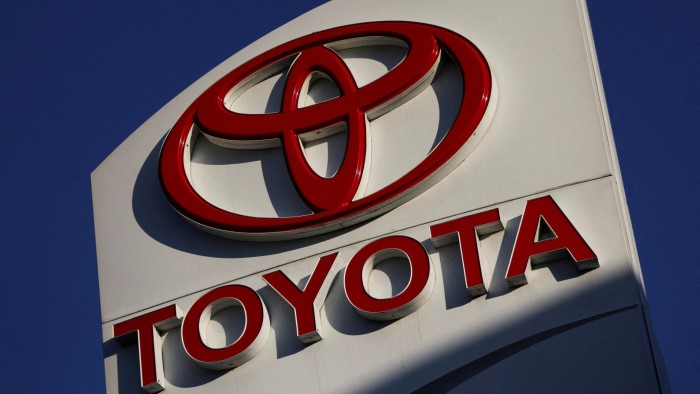Unlock the Editor’s Digest for free
Roula Khalaf, Editor of the FT, selects her favourite stories in this weekly newsletter.
Toyota raised its full-year profit forecast on cost-cutting efforts, despite recording a second consecutive quarterly drop in profit, as sales growth driven by a hybrid boom cooled off.
The world’s largest automaker said on Wednesday that operating profit came in at ¥1.2tn ($7.9bn) for the three months ending in December — its fiscal third quarter — down 27 per cent on the same period a year ago and falling short of analysts’ forecasts.
However, the company boosted its full-year operating profit forecast by ¥400bn ($2.6bn) to ¥4.7tn due to its efforts to improve on product competitiveness and supplier costs.
The Japanese automaker retained its sales crown for a fifth year in 2024 as it sold 10.8mn vehicles in 2024, while slipping from 11.2mn a year earlier.
But the third-quarter results echoed a softening of demand and intensifying competition from Chinese rivals such as BYD across the auto industry, which has damaged competitors such as Volkswagen, Nissan and Stellantis and led to disappointing sales at Tesla.
While most foreign automakers are retreating from the Chinese market, squeezed out by competition from local upstarts, Toyota is planning to double down.
On Wednesday, it unveiled a new battery and electric car company in Shanghai that would have capacity to produce 100,000 units, starting with the Lexus brand, with production set to begin in 2027.
Shares in Toyota rose 1.4 per cent on the increase to the full-year profit forecast.
Toyota has benefited from its sales of hybrid vehicles, which US consumers have been gravitating towards over the past three years, even as its slips from a period of record earnings. Overall sales suffered in the first half of its financial year because of certification issues concerning its subsidiary Hino Motors.
Analyst and investor attention will be focused on how Toyota, which has large plants in Canada and Mexico, will manage its strategy for production and investment in North America and navigate the potential threat of US tariffs.
The company donated $1mn to Donald Trump’s inauguration as president and it has unveiled a promise of $10bn of investment in US manufacturing, It has also said it is ready to ship initial products from its battery plant in North Carolina — its first outside Japan and costing almost $14bn to build.
Read the full article here




